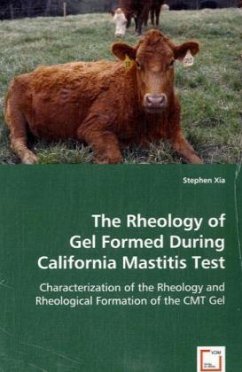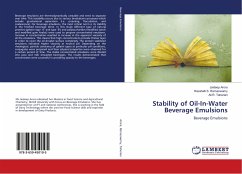Mastitis influences milk quality and early detection of mastitis is important. Three major mastitis detection methods are Foss Analysis, Whiteside Test and California Mastitis Test (CMT). CMT is more likely to be applied for monitoring mastitis on-line, yet some uncertainty exists regarding the rheology of CMT gel and factors that influence the CMT accuracy.
In this book, studies were focused on the rheology of CMT gel to understand the mechanism of gel formation and how various factors influence the rheology of the gel. It was found that CMT gel is a DNA/histone/surfactant complex, which is a time- and shear-dependent, non-Newtonian fluid. Since the reliability of the CMT hinges on the correlation between viscosity and somatic cell count (SCC), this study investigated specific factors that may influence gelation. These were rheology, testing conditions (such as time delay), shear rate, temperature, surfactant type and concentration, and milk composition.
It was found that when using capillary or Brookfield viscometry a linear relationship exists between the viscosity of the gel and the SCC; however, Brookfield viscometry was found to be more sensitive at the lower SCC range.
In this book, studies were focused on the rheology of CMT gel to understand the mechanism of gel formation and how various factors influence the rheology of the gel. It was found that CMT gel is a DNA/histone/surfactant complex, which is a time- and shear-dependent, non-Newtonian fluid. Since the reliability of the CMT hinges on the correlation between viscosity and somatic cell count (SCC), this study investigated specific factors that may influence gelation. These were rheology, testing conditions (such as time delay), shear rate, temperature, surfactant type and concentration, and milk composition.
It was found that when using capillary or Brookfield viscometry a linear relationship exists between the viscosity of the gel and the SCC; however, Brookfield viscometry was found to be more sensitive at the lower SCC range.







